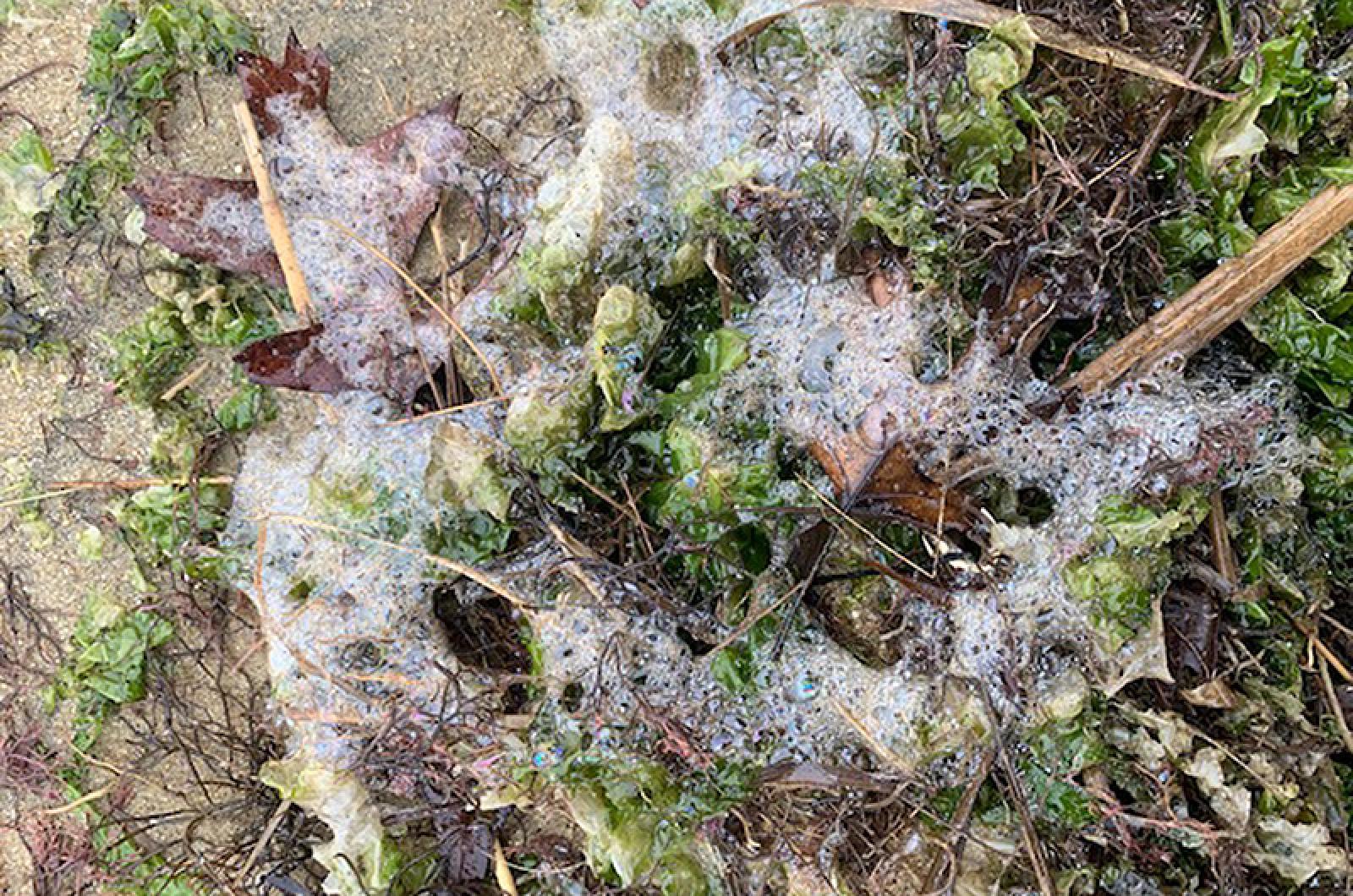Aphrodite left us more than just love, beauty and romance.
The origin story of this goddess asserts that she was birthed from the sea foam produced by Father Sky after his genitals were severed by his son Cronus and thrown into the sea.
Though all may not know her story, sea foam remains on the ocean and our beaches as a reminder of her genesis.
Sea or ocean foam, also known as spume, can accumulate on the beach, covering shorelines and mixing with the beach wrack. Sometimes it can appear in excess, which is what happened in 2007 in New South Wales, Australia, when spume covered the beach, local roads and buildings, and extended 30 miles into the Pacific Ocean. This event gave the area the nickname “cappuccino coast” for this frothy phenomenon.
When foam appears on beaches, it is a curiosity that leads folks to wonder whether a natural occurrence or a human-induced pollutant produced the suds. It can be either, or a combination of both. Spume is formed naturally, through the agitation of seawater that contains high concentrations of dissolved organic matter. Dissolved organic matter is a catchall term that can include salts, proteins, lignins, fats, and other decomposed plant and animal material. Chemicals from human activities such as fertilizers, detergents, sewage and other industrial effluent can also provide the matter that is the building blocks of spume.
All of these dissolved organics can act as surfactants or foaming agents that, like soaps or bubble baths, form froths that can persist as sea foam. Spume results when water with this matter is whipped up, and it can come and go as the bubbles burst with time, water movements, and wind and rain.
Sometimes, as when there are algae blooms, an excess of foam-inducing matter promotes the development of sea foam. Disaster can also occasionally result from its formation or excess. In one case, toxins in the foam caused a massive bird die-off on the West Coast. Surfers know to watch out for potentially dangerous spume with an adage that explains “when sea foam turns dark, smelly and thick, it may make you sick.” When the bubbles burst, problems can also arise if there are contaminants in them that become airborne.
Don’t believe that this foam is all bad. It can provide a food source for amphipods or other small beach-dwelling animals, be part of the wrack line habitat, and can serve to transport nutrients to the intertidal zone. There is one other important benefit of the excess dissolved organic matter required to produce sea foam: it is collectively the earth’s largest carbon reservoir, which comes in handy during this time of excess carbon and its implications in global climate change.
The science of spume answers a lot of questions as to its origin, purpose and decomposition, but I prefer to return to its romance. Those of us that love the ocean might admit to being slightly envious of French filmmaker Jean Cocteau, who proclaimed: “I have sea foam in my veins, for I understand the language of waves.”
Suzan Bellincampi is director of the Felix Neck Wildlife Sanctuary in Edgartown, and author of Martha’s Vineyard: A Field Guide to Island Nature and The Nature of Martha’s Vineyard.




Comments
Comment policy »